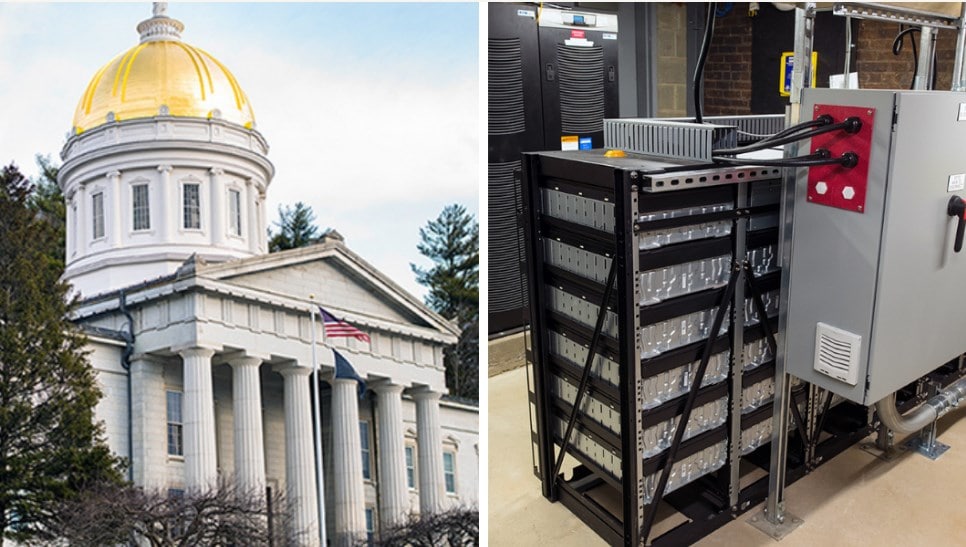If the power goes out at Vermont’s statehouse, the capitol building will now rely on backup power stored in batteries, rather than on a fossil-fueled generator. To boot, according to utility Green Mountain Power (GMP), the public-private project is part of the company’s program to feed extra power to the grid and help lower costs for all Vermonters.
Lawmakers and state officials joined leaders from GMP and local suppliers to make the announcement January 5 during a virtual news conference. In a video comment, Gov. Phil Scott said, “I know many think clean energy must be more expensive, but the work done today shows not only can we reduce carbon emissions, but if we are strategic, we can also save money in the process.”
The Samsung Mega E2 batteries were installed in the statehouse’s basement where a failing fossil-fueled generator from the 1960s once was. The 250 kWh energy storage system came online in the fall and now backs up more critical systems for the historic building, including the elevator. Northern Reliability procured and built the system, Dynapower supplied the inverter, and Virtual Peaker provided cloud-based software used to connect the battery system to the GMP grid for energy sharing.
As GMP explained, the batteries are part of the utility’s Bring Your Own Device for Business program, which provides financial incentives to businesses that install batteries and share some of that stored power with GMP’s grid system during energy peaks, when power is costliest and dirtiest. GMP expects the statehouse project to save Vermont taxpayers $44,000 and GMP customers an additional $18,000 over 10 years. The batteries also are projected to reduce carbon emissions by 6,388 pounds per year, the equivalent of not using 326 gallons of gasoline.
State Curator David Schultz noted that the energy profile of the statehouse has been in a constant state of evolution.
“The building itself dates to the mid-19th century, when its chandeliers were illuminated with coal-fired gas,” Shultz said. “Electricity was finally installed in 1898, and now, over 120 years later, there is an unprecedented reliance on power and technology to do the people’s business.”
This content is protected by copyright and may not be reused. If you want to cooperate with us and would like to reuse some of our content, please contact: editors@pv-magazine.com.









Any info on cost? I have a condo in a building that I think could really use something like this but probably a smaller size. A right sized battery system could really help smooth the demand charges.